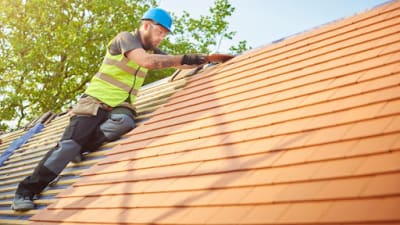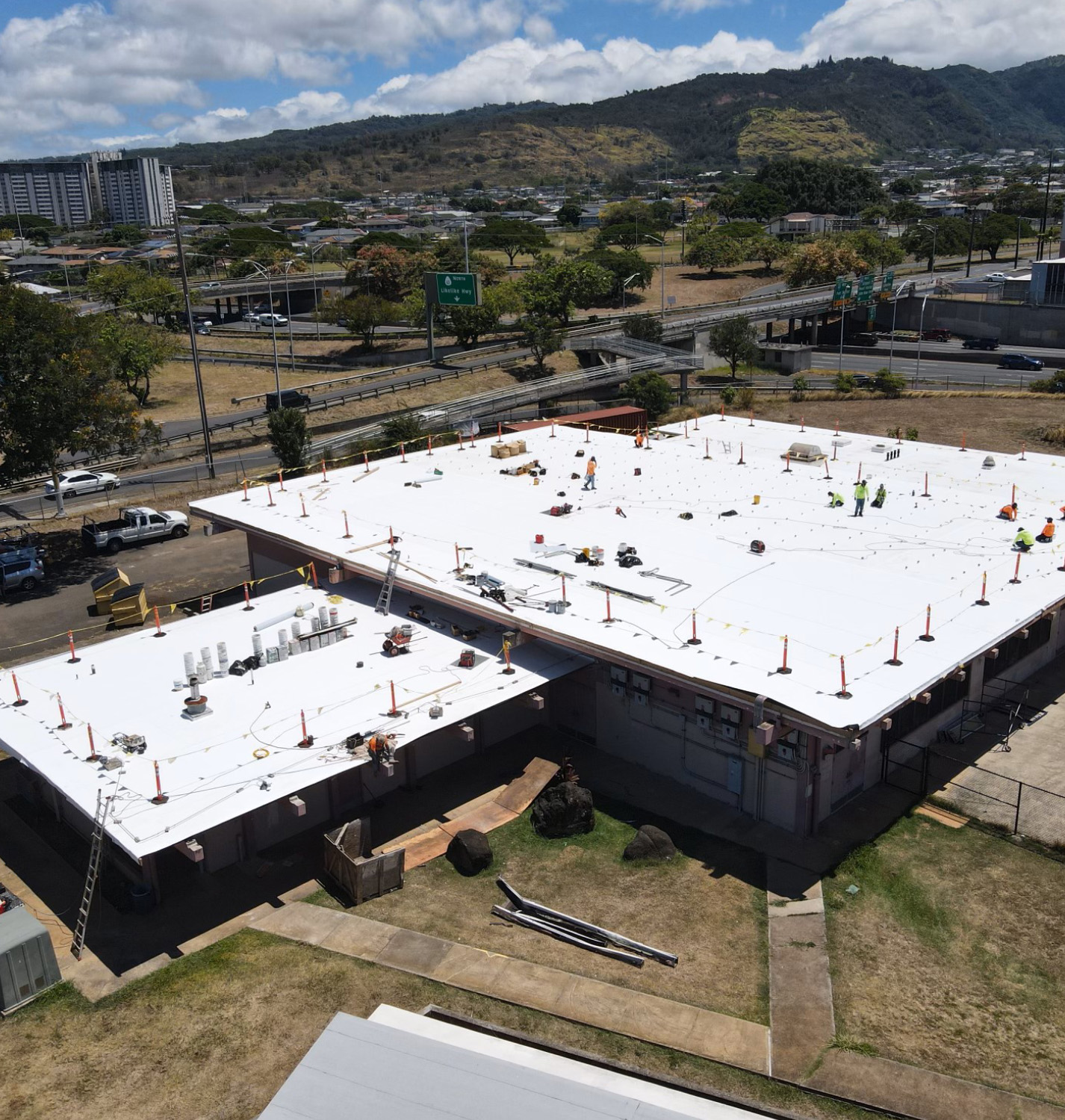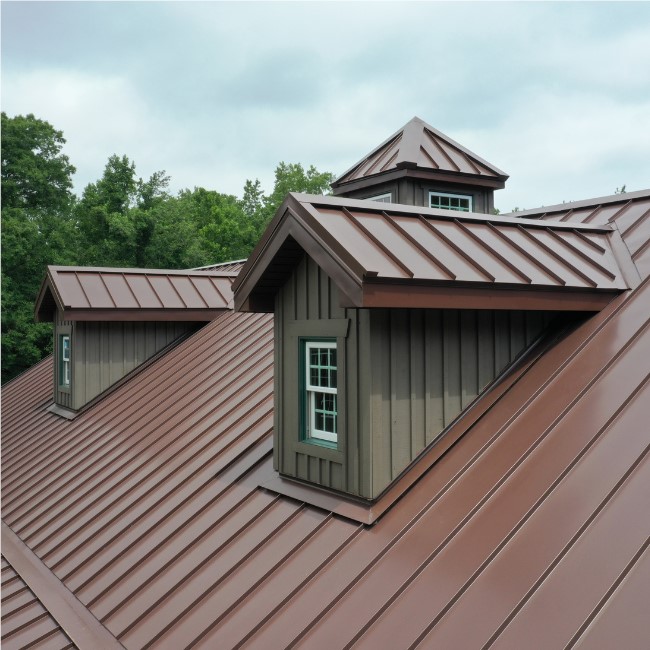Reveal Usual Roofing Troubles and Exactly How to Address Them Efficiently
When it comes to your roofing, spotting problems early can conserve you time and cash. What specific steps should you take to assure your roof stays in leading problem?
Determining Roofing Leakages and Their Causes

Following, examine your roof covering from the outside. Look for missing out on or broken ceramic tiles, rusted flashing, or harmed gutters.
Throughout heavy rain, observe your roof for any type of merging water or drips. This can reveal leakages that might not show up throughout dry problems. By remaining attentive and frequently evaluating your roofing system, you can capture leakages early and safeguard your home from more damages.
Handling Missing Out On or Harmed Shingles
When you observe missing out on or harmed shingles, it's important to act quickly to stop more concerns. You'll intend to determine the extent of the damage, repair any type of missing out on shingles, and think about precautionary upkeep tips to keep your roofing in leading form. Taking these steps can save you time and money later on.
Determining Tile Damages
Although shingles are designed to endure the aspects, they can still experience damages gradually, bring about potential leakages and pricey repairs. To identify shingle damage, start by inspecting your roof for missing, cracked, or curled shingles. Look for indicators of staining or granule loss, which can show damage. Pay focus to any kind of locations where tiles are raising or distorting, as these can produce vulnerabilities. It's also smart to examine for water discolorations or mold and mildew on your ceilings and walls, as these might signal leakages stemming from damaged shingles. Routinely monitoring your roof, specifically after extreme weather condition, can help you capture concerns early and preserve the integrity of your home.
Fixing Missing Tiles
After detecting tile damage, the next action is resolving any type of missing or damaged tiles immediately to stop further issues. If you can, climb up onto your roofing system safely, putting on proper gear. Taking activity swiftly will assist maintain your roof covering's stability and extend its life-span.
Preventive Maintenance Tips
How can you maintain your roofing system in top form and avoid tiles from going missing or getting harmed? Regular examinations are essential. Check your roofing at the very least two times a year and after severe climate. Search for indicators of wear, such as curling, splitting, or loosened roof shingles.
Maintain gutters tidy and complimentary of particles to assure correct water circulation and prevent shingle damages. Trim looming branches to lessen the risk of them scraping against your roof during tornados.
Consider using a protective sealer to expand your roof shingles' life-span. If you observe any kind of issues, address them quickly to prevent pricey fixings later. Taking these preventive steps can conserve you time and cash while assuring your roof covering remains durable and trustworthy.
Recognizing Roof Covering Air Flow Issues
Correct roof ventilation is important for preserving the durability and effectiveness of your roof system, as it assists regulate temperature and moisture levels in your attic room. Without ample air flow, you could encounter problems like extreme warm accumulation, resulting in premature shingle deterioration, or boosted moisture that can trigger mold growth and timber rot.
To analyze your roof covering air flow, check for signs of overheating, such as deformed roof shingles or a hot attic. Seek obstructed vents, which can restrict airflow and catch warm. You ought to assure your consumption and exhaust vents are balanced, permitting correct air exchange.
Attending to these issues immediately can protect your roof and conserve you from costly repair services down the line. Stay aggressive in maintaining your roofing's ventilation to secure your home.
Addressing Roofing Moss and Algae Growth
While you might appreciate the all-natural appearance of moss and algae on your roof, these organisms can lead to considerable troubles if left unchecked. Use a soft-bristle brush to carefully scrub away the moss and algae, being mindful not to harm your shingles.
Next, consider applying a specialized roofing cleaner or a mixture of water and bleach to kill remaining spores. Rinse completely to avoid any kind of chemical damages. In addition, mount zinc or copper strips along the ridge of your roof. As rain washes over these metals, it creates a protective obstacle versus future development. Normal examinations and upkeep will certainly aid protect against moss and algae from returning, guaranteeing your roof covering continues to be in excellent form for several years ahead.
Repairing Storm Damages and Wind Problems
After a storm, it's vital to analyze your roof covering for damages brought on by high winds and heavy rainfall. Begin by looking for missing or damaged shingles, as these prevail casualties. If you see any type of, it is very important to replace them immediately to avoid leakages. Next, inspect the blinking around chimneys and vents; harmed flashing can lead to water infiltration.
Seek any type of drooping areas, which could suggest water accumulation or architectural issues. If you discover any particles, like branches or leaves, remove them very carefully to stay clear of additional damages. If your rain gutters are obstructed, clear them to ensure correct drain.

For little fixings, you might handle it on your own, yet don't think twice to call a specialist for extensive damage. Keep in mind, acting quickly can save you from bigger issues down the line, so take that analysis seriously and address any problems asap.
Identifying Signs of Structural Damage
Exactly how can you inform if your roof covering is dealing with structural damage? Start by searching for noticeable sagging or dips in your roofline. These indicators suggest that the underlying structure may be compromised. Next off, check for fractures or spaces in the wall surfaces or ceiling, as these can indicate moving or resolving because of roof covering concerns. Take notice of leakages or water discolorations, specifically in locations where the roof covering fulfills wall surfaces. If you see missing out on or damaged roof shingles, it's vital to resolve them promptly, as they can reveal your roofing to additional damage. Examine your attic for any kind of indicators of daylight looking through, which can indicate your roofing system's integrity is at threat. Pay attention for uncommon creaking or popping audios, as they might indicate architectural anxiety. If you discover any one of these indications, it's time to speak with a roofing specialist for a detailed analysis.
Regular Maintenance Tips for Durability

Routine Evaluations Value
Given that a roof covering is your home's initial line of protection versus the aspects, routine evaluations are vital for preserving its integrity (roofing honolulu hi). You ought to check your roof a minimum of two times a year, ideally in spring and fall, to capture find out here prospective problems early. Look for missing out on or harmed roof shingles, signs of leakages, and any type of debris that can trigger issues. Pay close attention to locations around chimneys, vents, and flashing, as these prevail weak places. If you observe anything unusual, do not be reluctant to get in touch with a professional for a detailed analysis. Staying on par with these inspections can stop expensive repairs down the line and extend your roofing system's life-span, ensuring your home continues to be safe for many years to come.
Correct Gutter Maintenance
Routine roofing system inspections normally lead to the value of appropriate gutter upkeep. Check your gutters for leakages or rust; they can cause water damages to your roofing system and home. By following these ideas, you'll prolong your seamless gutters' life expectancy and safeguard your roof covering.
Often Asked Questions
Just How Can I Select the Right Roof Covering Material for My Home?
To pick the ideal roofing product for your home, consider environment, toughness, and looks. Research choices like asphalt shingles, steel, or tile. Think of maintenance demands and budget to locate what suits you finest.
What Are the Indicators I Required a Roofing Substitute Rather of Fixing?
If you observe extensive leaks, sagging, or missing out on tiles, you may need a roofing system replacement. If your roofing system's nearing its lifespan or has substantial damages, it's time to contemplate a full substitute instead of just fixings.
How Typically Should I Arrange Professional Roofing System Inspections?
You should arrange expert roofing system examinations a minimum of annually, preferably in springtime or fall. find here This aids capture possible issues early, ensuring your roof continues to be in excellent condition and extending its life-span.
Can I Mount a New Roofing Over My Old One?
You can install a new roofing he has a good point over your old one, however it's important to check local building regulations and assure the existing roofing's problem is audio. This approach can conserve money and time, however take into consideration prospective problems.
What Is the Typical Life Expectancy of Various Roofing Products?
The standard lifespan varies by material: asphalt roof shingles last 15-30 years, metal roofing systems can last 40-70 years, while floor tile or slate roofs may surpass 50 years. Choose wisely based upon your environment and budget plan.
Final thought
By staying vigilant and attending to common roof troubles quickly, you can shield your home and prolong your roof covering's lifespan. With a little regular upkeep, you'll not only secure your financial investment but likewise delight in tranquility of mind knowing your roofing is in top form.
Comments on “Local experience makes all the difference when hiring roofers oahu for your next project.”